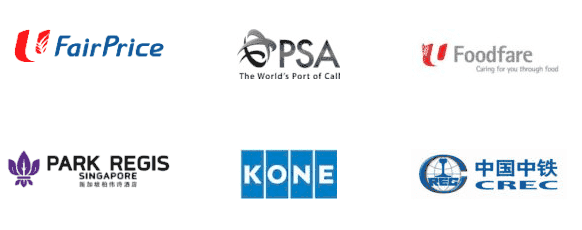Singapore Branch Office Registration
In the dynamic business landscape of Singapore, foreign companies seeking to establish their presence have a pivotal option: setting up a branch office. This choice is not only a testament to Singapore’s welcoming business environment but also offers a unique blend of international reach and local engagement. This article provides a thorough overview of the process of Singapore branch office registration, specifically focusing on the branch office structure. We will delve into the registration requirements, necessary documentation, and other critical logistics, emphasizing the importance of audit services and an accounting firm in Singapore in navigating these waters.
Understanding the Singapore Branch Office
A branch office in Singapore is essentially an extension of a foreign company, allowing it to engage in profit-generating activities within the city-state. It must be registered with the Accounting and Corporate Regulatory Authority (ACRA), highlighting Singapore’s regulatory framework for foreign businesses. Unlike a subsidiary, the foreign parent company retains full liability for the branch’s debts and liabilities, emphasizing the importance of careful planning and compliance.

Singapore Branch Office Registration Requirements
The foundation of setting up a branch office lies in understanding and fulfilling specific administrative and legal requirements:
- Name Correspondence: The branch’s name must mirror that of the foreign parent company, ensuring consistency and brand continuity.
- Local Representation: At least one authorized representative, who is a Singapore resident (citizen, permanent resident, or employment pass holder), must be appointed, reflecting Singapore’s emphasis on local accountability.
- Constitution and Activities: The branch’s operations and structure are governed by the foreign company’s constitution, with no separate constitution required for the branch itself.
- Registered Address: A physical office address within Singapore is mandatory, signifying the branch’s tangible presence in the business ecosystem.
Documentation for Singapore Branch Office Registration
The registration process demands a comprehensive set of documents:
- A certified copy of the foreign company’s Certificate of Incorporation and its Constitution.
- Particulars of the foreign company’s directors and the details of the Singapore resident authorized representative.
- Official memoranda detailing the powers of the local representative and the registered office address in Singapore.
- The latest audited financial statements of the parent company, if applicable.
All non-English documents must be translated, ensuring clarity and compliance with Singapore’s regulatory standards.

Registration Procedure and Timeline
Engaging a professional corporate services firm is advised to streamline the registration process, which is comprised of two main steps: name approval and entity registration. This efficient process can typically be completed within 1-2 days, assuming all documents are in order and due diligence is completed swiftly. The digital nature of Singapore’s registration process, including email notification of registration, reflects the city-state’s modern and efficient approach to business administration.
Bank Account Opening
Post-registration, setting up a corporate bank account is a crucial step, with procedures varying across banks. Some may require the presence of directors or agents, highlighting the importance of personal engagement in financial matters.
- Singapore Bank Account Opening Requirements:
- Banks require comprehensive information on foreign clients’ professional backgrounds and business plans.
- The process for foreign-owned businesses may extend to a few weeks.
- Documentation for Company Incorporation in Singapore:
- A certified true copy of the company’s Certificate of Incorporation.
- Corporate account opening application forms filled out.
- A certified true copy of the company’s Articles of Association.
- A certified true copy of the business profile from the Company Registrar.
- A Board of Directors resolution authorizing the opening of the account and listing authorized signatories.
- Residential Address Verification:
- Shareholders, directors, and ultimate beneficial owners must provide proof of their residential address.
- Ultimate Beneficial Owner Information:
- Information can be submitted through a biography, a company website profile, or a curriculum vitae.
- The ultimate beneficial owner must have more than 25% share ownership or voting rights, or significant control over the company, according to the Money Laundering Act.
- Company Details:
- Banks require detailed descriptions of the company, its intended business activities, prospective clients or customers, and expected transactions.
- Specific requirements may differ across banks.
- Banking Fees:
- Setup fees are generally lower at local banks than at international banks.
- Additional charges may apply for services like internet banking.
- Common fees include:
- Minimum deposit requirements for account opening.
- ATM withdrawal charges, particularly for withdrawals from non-affiliated banks.
- Fees for international money transfers.
- Charges for closing the account within six months of its opening.

Taxation Insights
As a non-resident entity for tax purposes, a Singapore branch office does not qualify for certain tax benefits available to resident companies. The corporate tax rate stands at 17%, underscoring the need for strategic financial planning and consultation with an accounting firm in Singapore.
Annual Filing Requirements
Foreign companies must adhere to strict filing deadlines, submitting their annual report and audited accounts within specific timeframes. This compliance ensures transparency and accountability in the branch’s operations.
Conclusion
Registering a branch office in Singapore is a strategic move for foreign companies aiming to tap into the ASEAN market. The process, while straightforward, requires meticulous attention to detail and compliance with local regulations. Engaging a professional audit and accounting firm in Singapore is not only beneficial but necessary for navigating the complexities of legal and financial frameworks. By understanding and adhering to the requirements outlined, foreign companies can successfully incorporate a branch office in Singapore, leveraging the city-state’s robust economy and strategic location.
Also read more about: Foreign Company Registration Options in Singapore
Why outsource to AG Singapore?
- OCBC Prestige Partner in Singapore: Recognized for outstanding corporate services.
- 5-Star Google Reviews: Achieved a top rating based on feedback from over 184 clients.
- Exceptional Track Record: Successfully incorporated over 200+ Private Limited (Pte Ltd) companies within a year.













